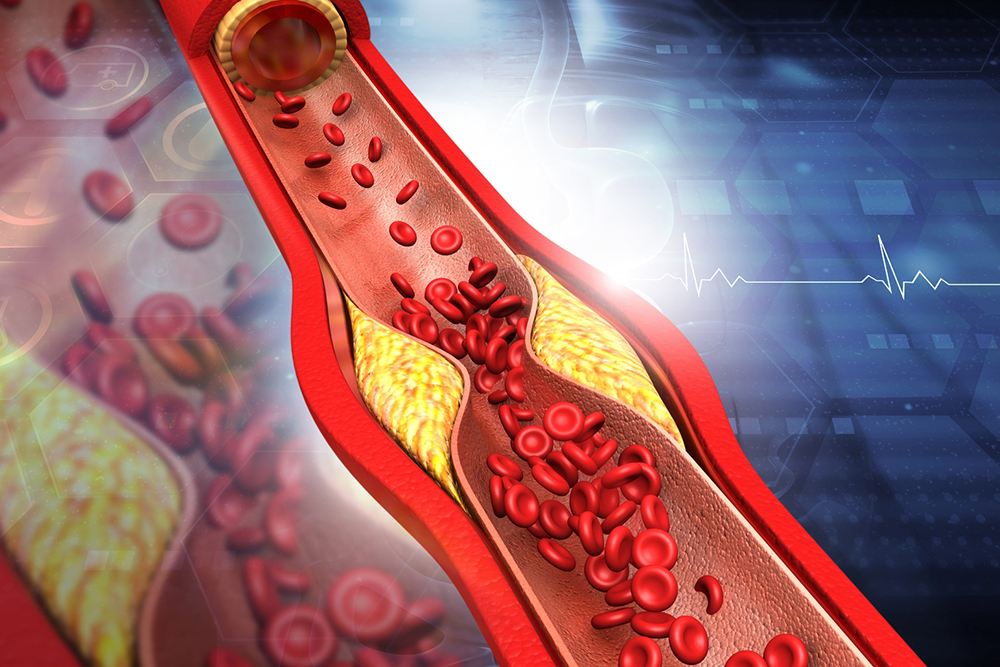8 Ways to Manage Plaque in Arteries
Atherosclerosis is a condition in which plaque builds up in the arteries. It could result from several factors, such as high blood sugar, high cholesterol levels, and high intake of processed foods. If left unchecked, the plaque buildup can damage the arterial lining and lead to health complications. While procedures like angioplasty are commonly used to manage this health condition, healthcare experts may sometimes suggest natural ways to remove plaque from arteries without surgery.
1. Eat fatty fish
Some foods are known to help naturally dissolve plaque buildup in the arteries over time; one of the common choices is fatty fish.

While fatty fish can help manage plaque in arteries, one must eat the right amount. Research studies have found that at least two or more servings every week lowers the likelihood of developing atherosclerosis. Omega-3 fats in fatty fish can also reduce platelet aggregation, thus preventing blood clots in the arteries.
2. Snack on berries
Like fatty fish, berries have healthy properties that make them perfect for maintaining arterial health and managing atherosclerosis.
One can choose from different varieties of berries, such as bananas, blueberries, raspberries, and blackberries. All of these can help improve atherosclerosis and overall arterial health. One can enjoy berries by adding them to fruit salads and yogurt or eat a bowl full of these fruits by themselves.
3. Consider citrus fruits
Inflammation in the blood vessels is one of the main causes of atherosclerosis. Citrus fruits like oranges, grapefruit, and sweet limes help tackle inflammation by reducing oxidative stress. They also help lower cholesterol and triglyceride levels in the bloodstream. Both of these are linked with cardiovascular issues and an increased possibility of plaque buildup in the arteries.
Different kinds of citrus fruits are easily available in grocery stores. That said, one should pick varieties low in sugar. Grapefruit, lemon, and lime are suitable because they have all the benefits of citrus fruits without excessive sugar. One can reach for these fruits any time during the day and even add them to a blender to make juice.
4. Add flax seeds to meals
Like fatty fish, flax seeds are considered excellent sources of omega-3 fatty acids. These tiny seeds decrease blood sugar and raise insulin sensitivity. In this way, they not only contribute to the prevention of atherosclerosis but also keep other diseases like diabetes at bay. One can add whole flax seeds to breakfast cereal or make a powder and sprinkle it on yogurt.
5. Reduce salt intake
High levels of salt in the blood can worsen plaque formation in the arteries and increase the risk of cardiovascular diseases. That’s why one should monitor their salt intake closely. Those who eat too much salt can progressively reduce the amount they add to their daily meals. Instead of salt, one can use other organic spices, like garlic and paprika, to enhance flavor, as they may not have adverse health-related issues. That said, these, too, should be had in moderation.
6. Manage stress
Chronic stress is directly linked with a host of cardiovascular disorders, including atherosclerosis. When one is stressed, their blood pressure and heart rate increase, and it also results in inflammation in the body. These factors can lead to plaque buildup in the arteries over time.
One can reduce stress by meditating daily for a few minutes and practicing rhythmic breathing exercises. Yoga, for instance, is also an excellent way to reduce stress . It can not only help clear the arteries but also provide several other health benefits.
7. Exercise regularly
Working out every day has several cardiovascular benefits. For example, it ensures proper blood circulation throughout the body and helps prevent and dissolve plaque in the arteries over time. But the most important benefit of regular exercise is that it helps replace aging and damaged cells in one’s arteries. This is important because damaged cells are often the main cause of plaque buildup.
While regular exercise helps everyone, seniors benefit more as the risk of atherosclerosis increases with age. One can choose any exercise, such as running, cycling, or swimming. If one cannot decide on what exercise to do, they can consult a professional to create a personalized workout plan.
8. Stay active throughout the day
Not everyone with atherosclerosis can set a dedicated time for workout sessions and exercise every day. If that is the case, one can move around and stay active wherever they are, at home or the office. A sedentary lifestyle may increase the risk of cardiovascular diseases and worsen plaque buildup in the arteries.

